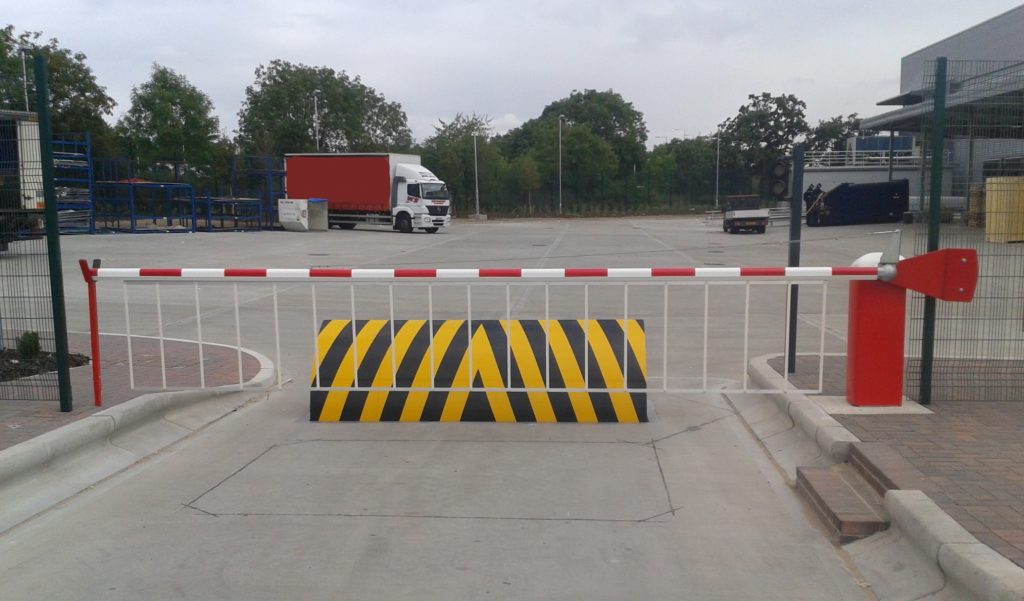Fascination About Wedge Barriers

Some Known Incorrect Statements About Wedge Barriers
g., spring assistance 65 )may be fixed to completion of the springtime pole 58 to enable compression of the springtimes 60. As the springs 60 are compressed in between the spring supports 62, the spring setting up 54 produces a force acting upon the camera paired to the springtime pole 58 in a direction 66. The staying pressure used to
the cam webcam deploy release wedge plate 16 may be provided given an electromechanical actuator 84 or other various other. As such, the spring assembly 54 and the actuator 84(e. g., electromechanical actuator)might run together to translate the webcam and lift the wedge plate 16.
As pointed out above, the spring assembly 54 exerts a constant force on the webcam, while the electromechanical actuator may be controlled to exert a variable force on the camera, thus allowing the training and decreasing( i. e., releasing and pulling back )of the wedge plate 16. In certain personifications, the constant force used by the spring assembly 54 might be flexible. g., electromechanical actuator) is impaired. As will be appreciated, the springtime setting up 54 might be covered and secured from debris or various other aspects by a cover plate(e. g., cover plate 68 displayed in FIG. 4) that might be considerably flush with the raised surface area 38 of the structure 14. As stated above, in the deployed placement, the wedge plate 16 offers to block gain access to or traveling beyond the barrier 10. As an example, the barrier 10(e. g., the wedge plate 16 )might block pedestrians or vehicles from accessing a home or pathway. As gone over over, the obstacle 10 is connected to the anchor 30 secured within investigate this site the structure 14,

front brackets 71. Therefore, the linkage settings up 72 may pivot and turn to enable the collapse and expansion of the link settings up 72 during retraction and deployment of the bather 10. The linkage settings up 72 reason motion of the wedge plate 16 to be limited. For instance, if a lorry is taking a trip towards the deployed wedge plate 16(e. As an example, in one situation, the security legs 86 may be prolonged duringmaintenance of the barrier 10. When the security legs 86 are released, the safety and security legs 86 support the weight of the wedge plate investigate this site 16 against the surface area 12. Therefore, the training device 50 may be deactivated, serviced, eliminated, changed, etc. FIG. 5 is partial viewpoint view of a personification of the surface-mounted wedge-style obstacle 10, showing the cam 80 and the cam surface areas 82 of the training system 50. Specifically, 2 cam surface areas 82, which are referred to as lower cam surfaces 83, are placed listed below the camera 80. The reduced camera surfaces 83 might be taken care of to the surface 12 (e. For instance, the reduced camera surface areas 83 and the installing plate 85 might develop a solitary item that is safeguarded to the support 30 by screws or other mechanical bolts. In addition, two webcam surfaces 82, which are referred to as upper camera surface areas 87, are placed above the camera 80 and coupled to (e. In other embodiments, interfering layers or plates may be positioned between the surface 12 and the reduced webcam surfaces 83 and/or the wedge plate 16 and the upper camera surfaces 87 As pointed out above, the camera
80 equates along the cam surfaces 82 when the wedge plate 16 is raised from the pulled back placement to the released placement. Additionally, as discussed above, the springtime assembly 54 find this (see FIG. 3 )may supply a pressure acting upon the camera 80 in the direction 102 using spring pole 58, which may lower the pressure the electromechanical actuator 84 is required to use to the webcam 80 in order to activate and lift the wedge plate 16. 1 )to the released setting(see FIG. 4). As shown, the camera 80 consists of track wheels 104(e. g., rollers), which contact and equate along the webcam surfaces 82 during procedure.